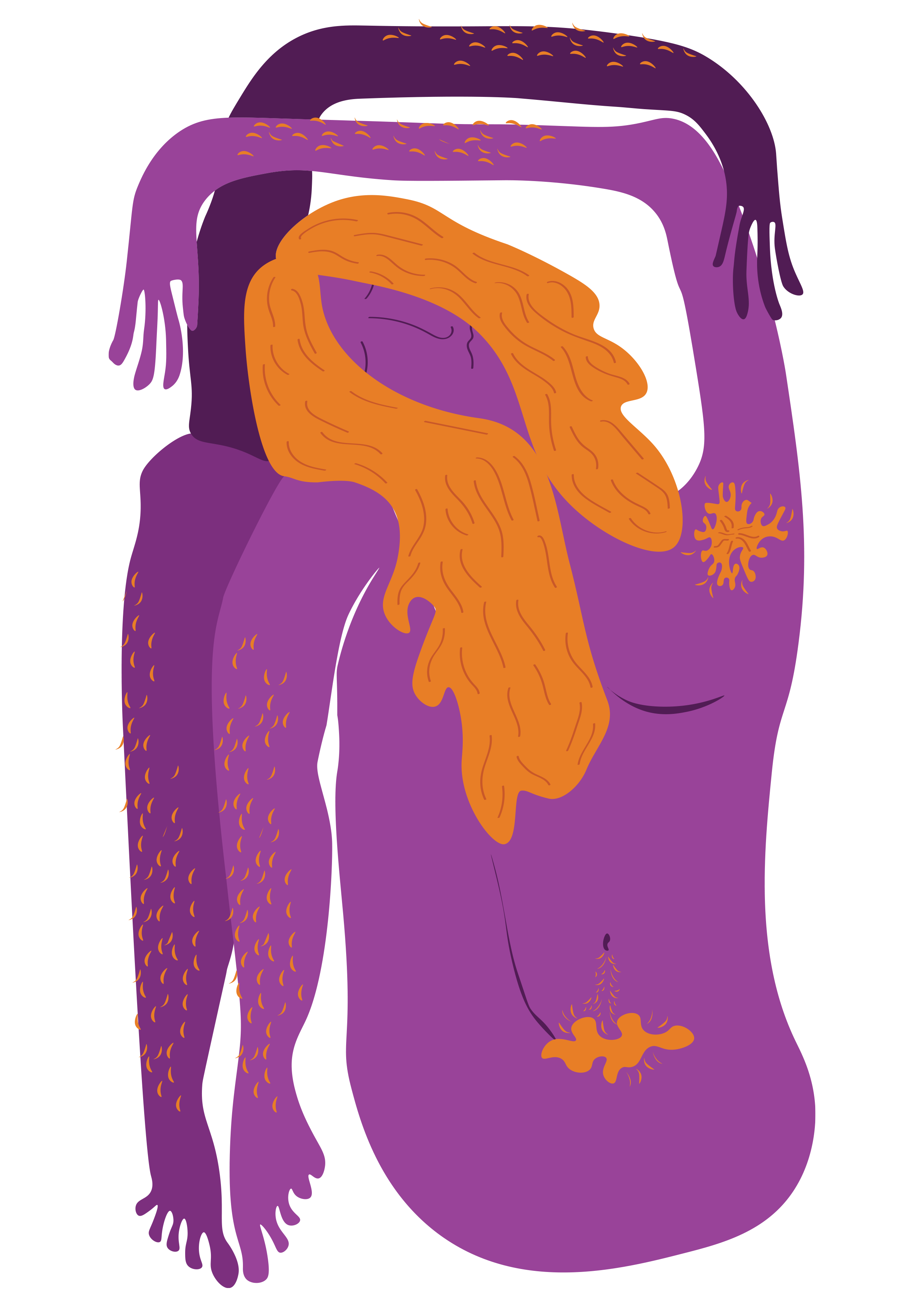TT_Taboo: Body Hair

TT_Taboo: Body Hair
“The students in Ås lets their hair down with Tuntreet.”
Hair is a fascinating concept. Most people would agree that on heads, long hair looks nice, but hair in the food is not all that great. Now that Movember is well underway, hair on the face is free to grow, but you will not find a single strand of hair (apart from the head) on any adverts or in magazines. Through a survey with 222 replies, Tuntreet has ventured into this confusing and complex jungle.
Journalist: Nora Helgeland
Illustrator: Anne Trætteberg Reitan
A Genius Business Idea?
To discover more about why we shave and how it all started, I had to consult the almighty Google. On the website of the Women’s Museum of California and the American research institution Smithsonian, I found some information that can explain our manners.
In the 1900s, Gillette started marketing various shaving products. In 1914, the first advert for women’s razors was released, stating that hair under the arms was un-feminine and straight up nasty. Throughout the First and Second World Wars there was a lack of nylon, and many women had to walk around with bare legs. That called for shaving!
In 1946, the first bikini was introduced, which marked the beginning of shaving the private parts. Playboy showed images of clean shaved women, and in the 60s the miniskirt came along. Suddenly, this polished and hairless exterior became the new norm. The razor industry, along with the rest of the beauty industry, has helped maintain all these ideas, which have now been ingrained deep into the roots of society.
Hairless Women and Other Expectations
You may have seen the ad where a woman sensually slides a razor along an already shaved, completely hairless leg. These are images that are pushed onto us on a regular basis. It seems plausible that this has had an impact on the students of Ås, when 62.6% replied that they feel obliged to be completely hairless, apart from on the head. It seems like most people prefer a bit of body hair on their partner, and men seem to care less than women. It looks like most people, regardless of gender, do not really care about the body hair of people who are not their partners.
Regarding their own body hair, 34% of women reply that they prefer being completely hairless apart from their head, and 48% prefer a little bit of hair. As for men, however, only 3% prefer being completely hairless apart from their head. Most men replied that they either do not care, or that they prefer a little bit of body hair. It seems as if women are the ones who feel the most pressure from society to be hairless.
What do you feel about your own beard growth?
Beard vs. No Beard
Thanks to Gillette’s aggressive marketing, the idea that a clean shaved face was a civilized face was manifested in society. Shaving became synonymous with masculinity and self-care. For women, other methods of hair removal were marketed so that they would not feel too «masculine». Most men who replied to this survey, however, were positive about their own beard growth, while women were more negative.
Shame
In the survey, over 30% replied that they feel a relatively large amount of shame about too much body hair, almost nobody feels shame about hair loss, and only about 3% feel shame regarding too little pubic hair.
97% replied that they have never tried any means to grow more body hair, but almost 8% replied that they have tried growing more hair on their head. A grand majority of them replied that they used creams or serums to increase hair growth.
Why do We Remove Body Hair?
According to the Women’s Museum in California, there are traces of shaving all the way back to the Ancient Egypt. Here, being clean shaved was a sign of hygiene and femininity. Darwin’s evolution theory may have played a part too. In his writing, he allegedly introduced the idea that humans have less hair than the apes because it was considered more sexually attractive.
It very well could be that the students in Ås have adapted some of the same ideas, as 70% replied that they remove hair for esthetical reasons, 16% for practical reasons ;), and a low percentage replied that they do it for reasons related to health or hygiene.
According to the Smithsonian, lice and other critters is another reason why people used to shave. Not so strange then, perhaps, removing anything that could prove as a cozy little nest, but that should no longer be that big of a problem. In The Guardian, M.D. Emily Gibson claims that you increase the risk of contracting STDs by removing pubic hair, added to an increased risk of inflammations where the hair is removed.
Where is Hair Removed?
About 80% replied that they remove pubic hair. Face and legs a bit lower, with 40% and 60% respectively. Other than that, hair seems to be removed from nipples, bums, bellies, toes and more, «the sky is the limit». 67% reported using razors to remove body hair.
Humans can differ quite a lot in appearance, and body hair is no exception. Hair can appear anywhere where there is skin, or not. What keeps coming up is that most people feel pressured by the society to get either more or less body hair. Women in particular can feel pressured to appear polished and clean shaved. When it comes to how each and every one of us feel about each other, we do not really seem to care all that much.


















